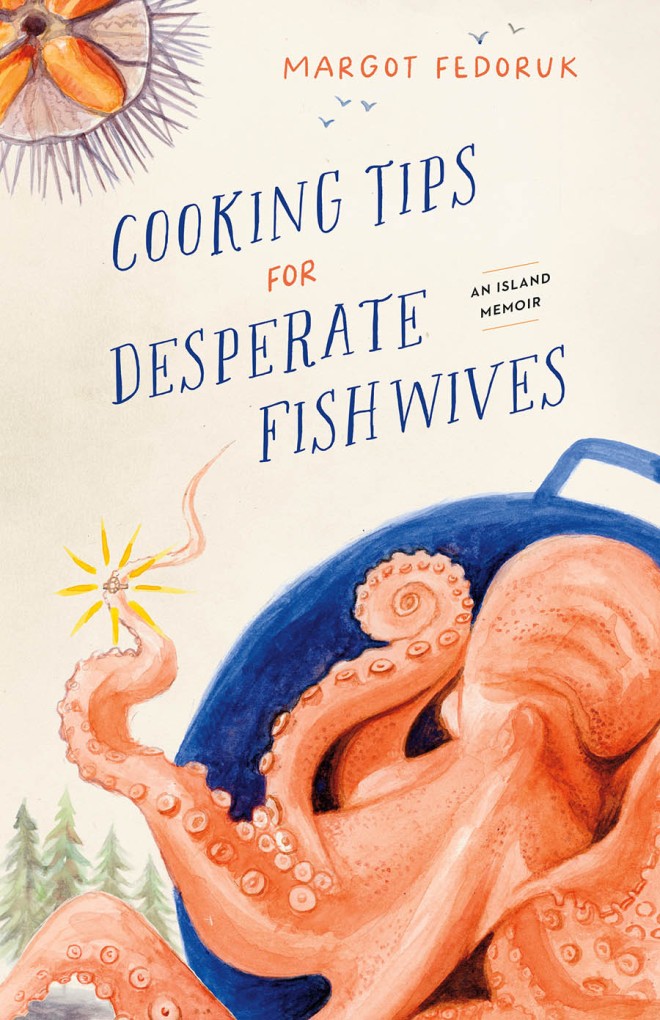
by Mary Ann Moore | Dec 1, 2022 | A Poet's Nanaimo
That’s a very catchy cover and title for Margot Fedoruk’s memoir published this Fall by Heritage House. The cover illustration is by Setareh Ashrafologhalai who also designed the book’s interior.
Margot, who lives on Gabriola Island, B.C., has lived in several places in Manitoba, Alberta and British Columbia and has had several diverse jobs and trainings in her life. One of her BAs, with a major in Creative Writing, is from Vancouver Island University in Nanaimo.
She has written some beautiful passages about her life from its early years in Winnipeg through to her years on the West Coast and she includes recipes throughout her memoir. The food prepared from those recipes as well as friends, certain family members, and her own fortitude have seen her through.
The introduction to Cooking Tips for Desperate Fishwives describes an event that is meant to have readers wanting to know more about this couple (which it does!): “The night I ran over Rick with my car, I was over four months pregnant with our first daughter.”
Rick, her husband who is a West Coast urchin diver, was okay and as earlier that evening before their argument Margot had made vegetarian lasagna, it’s the first recipe included in the book: Killer Lasagna (Garlicky Vegetarian Lasagna).
The memoir then goes back to Margot’s early life growing up in a Jewish neighbourhood in Winnipeg. She writes of her Ukrainian Little Baba, her father’s mother Antoinette Zapotoczny, who after marriage became “plain old Anne Fedoruk.” Anne’s husband was William Fedoruk who ran a store called Ideal Produce.
Margot’s maternal mother Neura was known as Big Baba to differentiate her from her other grandmother. Neura was married to her third husband, Meyer Zahn, a Polish Jew, known to Margot as Zayda. He was Margot’s favourite grandfather.
One of Big Baba’s recipes was for blinchikis or blintzes which can be filled with honey, jam or cottage cheese and strawberry sauce as Margot describes in the recipe.
Margot had a younger sister Tanya and after their parents divorced, their mother was involved with other men: Clancy and then Ronald whom she married.
The book’s chapter titles are catchy too such as “Travel Tips for Anxious Children” in which Margot describes a trip she took to Disney World with her father in 1976.
Margot’s mother Ella died of ovarian cancer and as if that wasn’t devastating enough for the two girls, they lost the family home to Ronald.
Having earned a degree in environmental studies, Margot started a physically demanding job of tree planting in northern British Columbia. She writes: “We piled into trucks called Crummies and were driven to a logging camp about thirteen kilometers away [from Prince George]. I was mesmerized by the BC landscape. The trees were taller, the flowers more vibrant than back home in Winnipeg. The clouds touched down on the curve of the highway, our truck hurtling through the layers of the stratosphere.”
Margot met her future husband Rick who was also tree planting as it was his off season from urchin diving. “Rick did not look like someone who would change my life. He drove an orange VW van with a picture of Sid Vicious taped to the window.”
She returned to Winnipeg where she lived with her sister Tanya until Tanya was nearing her high school graduation. Margot then moved to Vancouver where she lived in a bachelor apartment off Robson and worked as a waitress at the Penthouse Nightclub.
Margot surprised herself when she contacted Rick through his mother in Fort McMurray, Alberta. Rick got in touch the next month from Victoria. He had been “living in a motel and diving around Sooke Harbour.” They started dating and Rick made weekend visits to Vancouver between dives off Vancouver Island.
It was on one of her visits to Victoria that Margot knew she was in love. She and Rick were “out on the dive boat called The Seeker and [Rick] laughed and pointed at a startled duck skimming the water with its wings. This was where I fell in love, out on the ocean on a cramped aluminum boat on a clear sunny day.”
They rented an apartment in Victoria and Rick continued with his diving career. And so began the many nights when Margot would hold her breath until she knew Rick was safely ashore.
At this point in the book, in a chapter entitled “Tending to Love,” it’s 1994 and Margot travels to Haida Gwaii, B.C. to work as Rick’s “dive tender.” She wasn’t very good at the job but it meant they were together.
Margot gave birth to their first daughter Hailey in Victoria. Having taken a resident care aide course at Camosun College, she got a job as a nurse’s aide “which involved shift work at the nursing home, Mount St. Mary Hospital.
The first time Margot and Rick lived on Gabriola Island was December 1999 when their daughter Chloe was just under two weeks old.
Margot had taken a magazine writing course and on Gabriola, at night, “took writing classes from the library, learning how to write children’s books, which I illustrated with pen and ink. During the day, I taught children’s art classes at the Women’s Institute Hall. I took any job that allowed me to bring Chloe along.”
Although Rick enrolled in a boat-building program at the Silva Bay Shipyard, he was always drawn back to diving and the amount of money that sort of dangerous work pays.
Margot writes further of Big Baba, Neura Litvinov, born in 1917. She flew to Winnipeg to see her when Big Baba attempted suicide.
“A few months later she was found hanging in her bathroom from the metal curtain rod.”
Margot taught her daughters to make “homemade perogies or the delicious meat-filled dumplings we called kreplach, served boiled with butter and plain mustard. I felt a flutter of pain when I looked at my oldest daughter, who loved to wear sparkling jewelry and bright flowery skirts – she reminds me so much of her. My youngest daughter’s graduation dress was embossed with brilliant, beaded seashells like those dress-up clothes I played with in Big Baba’s cool basement on those long winter days in Winnipeg.”
Included is a recipe for Russian Pelmeni referred to by Margot’s family as kreplach, “traditional Jewish dumplings, which are normally stuffed with ground chicken or beef.” As she writes: “Like many things in our family, recipes have been mixed up and borrowed from other world cuisines.”
One of Margot’s more lucrative paying jobs was housecleaning on Gabriola. She also took up soap making and other crafts she could sell at the Gabriola Farmers’ Market.
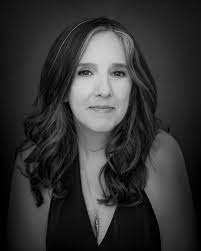 Her Starfish Soap Company required the making of “thousands of bars of soap to sell to tourists and a growing list of island customers.” She found she could use nettles from “the marshy area at Whalebone Beach” for the tops of homemade pizza as well as for geranium and lavender nettle shampoo bars.
Her Starfish Soap Company required the making of “thousands of bars of soap to sell to tourists and a growing list of island customers.” She found she could use nettles from “the marshy area at Whalebone Beach” for the tops of homemade pizza as well as for geranium and lavender nettle shampoo bars.
A recipe is included for Wild-Crafted Stinging Nettle Pesto as well as for Starfish Soap Company’s Famous Pink Himalayan Salt Bars.
Before his recipe for Rick’s Easy Spicy Chicken Wings, Rick offers his perspective about coming home with his dive bag full of stinky work clothes. He mentions a T-shirt Margot bought him “because wearing it makes me not so homesick. She doesn’t know that it’s hard for me to leave. Sometimes the homesickness feels unbearable.”
Margot’s photo: Vital Image Photography
After years of Rick working away from home and coming close to breaking up on several occasions, he and Margot moved to Calgary where he could work for his cousin’s electric company. Margot “enrolled in an online office administration course.”
She had taught herself to type” with excerpts from classics like Franz Kakfa’s Metamophosis or J. M. Barrie’s Peter Pan.”
Rick couldn’t stay away from his work as a diver though and Margot cried “don’t leave!”
“It was like the night of the killer lasagna all over again, but this time it was Rick who was pushing for change.”
They moved back to Gabriola Island “also known as Petroglyph Island, with over seventy rock carvings scattered across the island.”
In a chapter entitled “Shade of Towering Cedars,” Margot writes of “walking a trail in Sandwell Provincial Park with Chloe, who has lived on Gabriola Island for most of her eighteen years. We were headed to find an ancient Snuneymuxw cave burial site near the cliffs.”
Vancouver Island University (VIU) Elder-in-Residence C-tasi:a – Geraldine Manson has written a book that looks at the history, stories and meaning behind the petroglyphs on Gabriola Island and in the Nanaimo area.
The book, Snuneymuxw History Written in Places and Spaces: Ancestor’s Voices—An Echo in Time, was written parallel to a project at the Gabriola Museum and helps to share the background of the images. It’s available there and through Strong Nations Gifts & Books.
“Some of these images are considered spiritual and continue to be used in sacred ceremonies,” Geraldine says.
As with others in Nanaimo and area, Margot went to London Drugs to buy a marriage licence. She was fifty-three years old and had never been married. “After twenty-seven years it might really happen,” she writes.
The wedding was a surprise to Margot and Rick’s daughters although having people over for Christmas Eve was something new.
As for Margot, she writes: “When I retell the story of our wedding, I love emphasizing the surprise aspect of the event, how Chloe and Hailey never suspected a thing – because maybe I had, in fact, surprised myself at how much I had wanted to marry Rick.”
Their honeymoon was in Campbell River where they stayed at the Ramada Inn. Rick left for the dive boat every morning and didn’t return until twelve hours later.
Back home on Gabriola, Margot reflects: “There are times when Rick is gone, and my emotions ache at the base of my throat – like the sharp spines of a fish. I wish for a goddess of storms; a benevolent woman listening to the prayers to take mercy on desperate fishwives, who peers down from the clouds with a compassionate face. Like Little Baba’s Mary. I imagine she understands the late-night murmuring of women waiting at home for their men. I pray for Rick to be heading home safely down the highway with his dive bag full of damp clothes, pungent with the scent of diesel fuel and sweat. This goddess for fishwives. . . . is the saint of desperate fishwives, non-denominational, wise, all-knowing, and a good cook to boot.”
In her chapter entitled “Like a Fish to Water” from which the above passage is taken, Margot includes a recipe for Sea Urchin Fettuccine with BC Spot Prawns.
In the epilogue to her memoir, Margot reflects on a “Day Minder 1991” that her late father gave her. In it are scribbled notes and “a hodgepodge of recipes.”
She writes: “it is an ancient artifact that tells the story of what our family ate, and how we entertained ourselves with complicated recipes to keep from going mad on long rainy days.”
Included in her notebook and in her memoir is Pizza Dough for the Bread Machine, a recipe Margot made at least once a week. It calls for a cup of water or a cup of beer if you have it. Margot says: “I would use the tinny Lucky beer from a can in Rick’s dive bag, which I would find rolling around between his wool socks.”
by Mary Ann Moore | Oct 7, 2022 | A Poet's Nanaimo
No, this isn’t a blog about money. It’s about rest.
The quote is from Virginia Woolf who wrote in her diary on February 16, 1930: “I would like to lie down and sleep, but feel ashamed. Leonard brushed off his influenza in one day and went about his business feeling ill. But as I was saying, my mind works in idleness. To do nothing is often my most profitable way.” (Love Letters: Virginia Woolf and Vita Sackville-West, Vintage Classics, 2021)
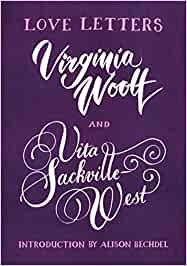 We haven’t learned much since then about rest (Virginia died in 1941) and sometimes it’s illness that has us realize the benefits of rest. And when you take the time to be idle, without being ill, there are indeed many gifts. People often feel guilty when they stop and so push through pain and fatigue as Leonard Woolf did, brushing off his influenza in one day.
We haven’t learned much since then about rest (Virginia died in 1941) and sometimes it’s illness that has us realize the benefits of rest. And when you take the time to be idle, without being ill, there are indeed many gifts. People often feel guilty when they stop and so push through pain and fatigue as Leonard Woolf did, brushing off his influenza in one day.
Recently I went to see a new physiotherapist (new to me) as my back had clenched up. This was nothing new but I did want to have some advice and support for moving forward and continuing to spend time at the computer writing as well as facilitating Zoom writing circles.
John gave me some exercises for my shoulder and hip and some strengthening exercises for my back. As I’ve worked at a typewriter and computer for about 55 years, my back is definitely in need of support. Ultrasound treatment was helpful and the best advice I received was to lie down four to five times a day for fifteen minutes at a time with my neck supported on a rolled-up towel.
This new practice is my form of meditation. I don’t attempt to read or do anything during these fifteen-minute stretches on my bed. I only do it twice a day now although more often would, I’m sure, be very helpful.
Asha Frost who is a member of the Chippewas of Nawash First Nation in Ontario has had a struggle, in the past, with allowing herself to rest even when diagnosed with Lupus. In her book You Are the Medicine, Asha includes a story of “Why Bear Began to Hibernate.” Bear has a message for us:
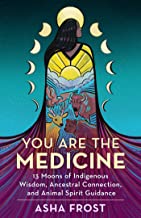 You are worthy of rest.
You are worthy of rest.
Listen to the messages from your body.
Magic is birthed from the void.
The Great Mystery moves through us, even when it appears that nothing is happening.
Taking a walk around the property where we now live, Sarah and I see many signs of Nature preparing to rest. The little Garry Oak planted this year has brown leaves already knowing in its young state, the need to rest for the winter. The poppies now have bare heads and the alum have shapes like satellites. The leaves of the cottonwood tree are drifting to the ground to crunch underfoot. The Virginia Creeper is a vibrant red, a final performance before resting.
I’ve read essays by modern day essayist Rebecca Solnit who sometimes posts on Facebook. She recently had something to share about rest saying “ creative work too benefits from rest and respite. As a writer I benefit greatly from leaving the work alone and coming back to it fresh, as one does with a relationship; pause, stoppage, inaction, inattention can all be wildly generative, and if they’re not that might be its own kind of fruitful that cannot be measured.”
She continues by saying: “Take refuge in that beautiful stillness in which everything is happening in all the ways that nothing is happening in busyness. Everything happening in the depths, like deep water under a reflective surface, a lake reflecting clouds with schools of fish in the depths. Seeds germinating underground. Sitting still as zazen or just daydreaming or watching clouds is an act of revolt against the shouts that we should be doing something/do more/do more faster that are all around us. If you find that nothing is hard to do, it’s exactly because it’s this kind of revolt against the production/consumption juggernaut that is a kind of war against rest, depth, and the earth. Inaction might be another face of peace in our times with stillness the ceasefire in which spring comes again.”
It’s true that the work and the creator of it benefit from rest and stillness with “everything happening in the depths.”
Poet Jane Hirshfield in an interview with Christian McEwen for her book Sparks from the Anvil: The Smith College Poetry Interviews, says she praises silence rather frequently.
“I praise what happens within silence and the unsaid. And I praise not knowing, abiding in question rather than leaping to what may be a too-easy answer. I also often speak about transition in poetry. In fiction or playwriting, that is absolutely common. But in poetry workshops, it’s relatively rare. I asked my friends about this when I began teaching it, and no one had ever said a word to them about transitions in poetry. For a transition to happen, you need a gap, a little sabbath. I sometimes feel that all wisdom, all newness of insight and experience, lives in the hinges – of poems, of a life.”
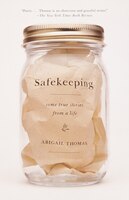 So along with the respite we need and the rest the work needs, Jane is referring to transitions made in “a gap, a little sabbath.” Poetry has those “hinges” visible on the page in spaces between stanzas, sometimes between words. Jane is referring to the hinges of a life as well and it’s in those still places that we connect to our own story, our own wisdom and insight.
So along with the respite we need and the rest the work needs, Jane is referring to transitions made in “a gap, a little sabbath.” Poetry has those “hinges” visible on the page in spaces between stanzas, sometimes between words. Jane is referring to the hinges of a life as well and it’s in those still places that we connect to our own story, our own wisdom and insight.
And prose writers too have used space for readers to take a pause, a rest during to reflect on what we’ve read and perhaps to recall our own story. For example, memoirs by Abigail Thomas are made up of vignettes which sometimes take up only half a page. I’m thinking of one example: Safekeeping: Some True Stories From a Life (Anchor Books, 2000) in which Abigail has written about pivotal moments in her life including the death of her second husband. As the book’s description says: “This is a book in which silence speaks as eloquently as what is revealed.” Sometimes the passages of prose are as brief as one paragraph on a page. And this is a writer who is fond of napping with her three dogs.
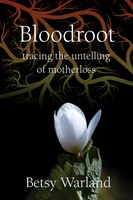 Betsy Warland’s Bloodroot: Tracing the Untelling of Motherloss (Inanna Publications, 2021) broke new ground when it was first published in 2000 by Second Story Press. There is a lot of white space and as Susan Olding notes in her foreword recalling her first reading of the book in 2008: “The space had presence and weight. The space made room for what cannot be said.”
Betsy Warland’s Bloodroot: Tracing the Untelling of Motherloss (Inanna Publications, 2021) broke new ground when it was first published in 2000 by Second Story Press. There is a lot of white space and as Susan Olding notes in her foreword recalling her first reading of the book in 2008: “The space had presence and weight. The space made room for what cannot be said.”
In Chantal Gibson‘s endorsement of Bloodroot, she says: “Read the text. Read the white space. Read the silences in between.”
In the passage by Rebecca Solnit quoted above, she begins: “If you’re sick or injured and healing or growing a new life inside you or just worn out, please notice that that thing known as ‘doing nothing’ is when you’re doing the utterly crucial and precious work of growing and healing and restoring. This also goes for everyone who’s just worn down, exhausted, dispirited, and who’s not that right now? I’m not the Nap Ministry but I’m for the power of rest and the holiness of respite and the you that is your cells and circulatory system and all those inner workings that are so mysterious and necessary and regenerative if we let them be.”
I first heard of the Nap Ministry which “seeks to dismantle white supremacy and capitalism by embracing rest as a form of resistance” in Hannah McGregor’s book: A Sentimental Education (Wilfrid Laurier University Press, 2022). The Nap Ministry is a project created by Tricia Hersey, “at the intersection of Black feminist thought and disability justice,” who is known as The Nap Bishop, Hannah says in her chapter entitled “Caring Ferociously.”
The late poet Audre Lorde linked self-care to warfare in her 1988 essay collection A Burst of Light. She was living with cancer at the time. “Overextending myself is not stretching myself. I had to accept how difficult it is to monitor the difference. Necessary for me as cutting down on sugar. Crucial. Physically. Caring for myself is not self-indulgent, it is self-preservation and that is an act of political warfare.” (As quoted in A Sentimental Education.)
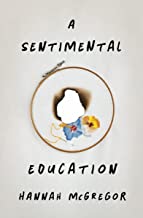 As Hannah McGregor says, Lorde was writing “specifically about self-preservation as a Black lesbian feminist, the refusal to be either forced to live or allowed to die.”
As Hannah McGregor says, Lorde was writing “specifically about self-preservation as a Black lesbian feminist, the refusal to be either forced to live or allowed to die.”
As I thought about rest, many resources came my way hence all the quotes above. And I thought back to the Fall of 2015 when I had an extended rest with cancer treatment and surgery. Having radiation treatments on my shin didn’t prevent me from walking all over Victoria for the five weeks I was there. My form of rest was not needing to accomplish anything while allowing my body to heal.
While some may feel guilty resting, others of us love what we do and so press on regardless. We tend to take our bodies for granted until they complain and we have to take breaks even from the work we love.
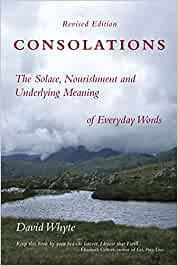 Poet and philosopher David Whyte says: in his book Consolations: “We are rested when we let things alone and let ourselves alone, to do what we do best, breathe as the body intended us to breathe, to walk as we were meant to walk, to live with the rhythm of a house and a home, giving and taking through cooking and cleaning. When we give and take in an easy foundational way we are closest to the authentic self, and closest to that self when we are most rested.” (Consolations: The Solace, Nourishment and Underlying Meaning of Everyday Words, Many Rivers Press, 2015).
Poet and philosopher David Whyte says: in his book Consolations: “We are rested when we let things alone and let ourselves alone, to do what we do best, breathe as the body intended us to breathe, to walk as we were meant to walk, to live with the rhythm of a house and a home, giving and taking through cooking and cleaning. When we give and take in an easy foundational way we are closest to the authentic self, and closest to that self when we are most rested.” (Consolations: The Solace, Nourishment and Underlying Meaning of Everyday Words, Many Rivers Press, 2015).
It gives one pause to think about our authentic selves as being realized when we are rested.
Kim Rosen, another poet who has learned hundreds of poems by heart as has David Whyte who inspired her, published an essay in August on “The Paradox of a Purposeful Life.” She quotes poet Naomi Shihab Nye who writes:
No, I was not busy when you came!
I was not preparing to be busy.
That’s the armor everyone put on
to pretend they a purpose
in the world.
From 19 Varieties of Gazelle: Poems of the Middle East (Greenwillow Books, 2005)
The pandemic which began in the spring of 2020 forced us to rest (if we weren’t frontline workers). Now we may have to make that decision for ourselves. We don’t need to be busy and productive to value ourselves as it is in fact in the silence and stillness of rest that we can appreciate all of who we are. I believe it was my wise friend Andrea Mathieson who said stillness is the place of balance that inspires.
by Mary Ann Moore | Sep 10, 2022 | A Poet's Nanaimo
Eric Maisel who has written over 50 books on writing, creativity and such topics as establishing your own daily practice, and Lynda Monk, writer and director of the International Association for Journal Writing (IAJW), have gathered an exciting array of contributors for The Great Book of Journaling offering a myriad of innovative approaches to a personal writing practice.
Both Eric and Lynda have contributed chapters to the book. Eric’s is “From Journal to Memoir” which will interest many readers as they think about what to do with their accumulation of journals.
Lynda’s is “The Reflective Journal” in which she outlines “The 5 Steps of Life Source Writing” which she created for “self-care, self-discovery, creativity, and wellness.” Lynda regularly teaches, speaks, and writes on the healing power of personal writing.
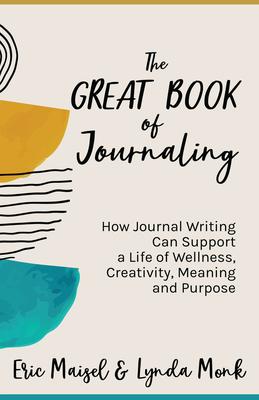 The sub-title of the book is “How Journal Writing Can Support a Life of Wellness, Creativity, Meaning and Purpose.” A tall order and I believe the book fulfills its intent. Published by Mango this summer, The Great Book of Journaling features essays by forty of the top journal experts in the world including SARK, Kathleen Adams, Judy Reeves, and Lucia Capacchione.
The sub-title of the book is “How Journal Writing Can Support a Life of Wellness, Creativity, Meaning and Purpose.” A tall order and I believe the book fulfills its intent. Published by Mango this summer, The Great Book of Journaling features essays by forty of the top journal experts in the world including SARK, Kathleen Adams, Judy Reeves, and Lucia Capacchione.
Those are names you may well recognize as their books have inspired many for years, including me. I feel very honoured to be included in this compendium on journaling, one of my everyday practices. Journaling is the foundation for everything I do.
SARK (Susan Ariel Rainbow Kennedy) invites readers into “Juicy Journaling” in her chapter which encourages writing that “contains all the parts of you – not just the easiest or most attractive parts.”
Everything SARK does is approached through her MicroMOVEment Miracle Method including publishing eighteen bestselling books. She designed the “ignition system” because she “figured I could do just about anything for five minutes.” I’m definitely appreciative of being reminded of this and want to follow some of her prompts for “juicy journaling.”
Kathleen Adams takes a “small and simple” approach in her chapter: “Journaling Simplicity.” Kathleen is the founder and director of the Center for Journal Therapy, Inc. and its two online schools. She has several suggestions for short sprints.
Judy Reeves is one of my fellow IAJW Journal Council members as are many of the contributors to The Great Book of Journaling. I’ve been inspired by Judy’s books on writing including A Writer’s Book of Days.
In Judy’s chapter, “The Storytelling Journal,” are some ideas for organizing your material when rereading old journals . In the “Try This” section, she has many suggestions for enriching “your journal’s storytelling voice.”
In “The Creative Journal,” Lucia Capacchione, an art therapist and early pioneer in journal therapy, shares some Creative Journal Expressive Arts principles and practices. “If you can hold a crayon, you can do this work,” Lucia says. This is a method of drawing or scribbling your feelings with your nondominant hand and dialoguing with it.
Mari L. McCarthy who is the founder and Chief Empowerment Officer of CreateWriteNow has some good ideas in her chapter, “Journaling Basics.” In her “journaling story, “Mari describes a past in which she did not listen to her body until she was diagnosed with MS. She writes: “I learned to tune into my health by beginning to journal every morning without fail.” She suggests you can start small by committing to “writing a single sentence or write for one minute.” You can always do more, if you choose, such as getting “all those jumbled thoughts out of your head and onto the page.”
In “The Writing Body,” Emelie Hill Dittmer, a third-generation survivor of the Holocaust, offers “Try This” points in a recommended order when you plan to write about traumatic events.
The Great Book of Journaling even has a chapter on “Journaling Resistance” by Liz Crocker who is the proud owner of Canada’s oldest children’ bookstore, Woozles, in Halifax.
Merle R. Saferstein trains hospice staff and volunteers to help patients leave their legacies and also works directly with patients at the end of their lives doing the same. In her chapter, “The Legacy Journal,” Merle gives some legacy journaling tips as well as descriptions of the different forms of legacy journaling which include love letters and ethical wills.
Midori Evans is the founder of Midori Creativity, a creativity-coaching business whose chapter is “The Elemental Journal.” Her prompts are related to the four elements of earth, air, fire and water to act as a framework for diving into the stories of our lives.
Mary Ann Burrows, a B.C. artist and writer, contributed “The Forest Journal” which seems ideal for the magnificent forests we enjoy in British Columbia. Mary Ann says: “Trees help wake up our senses and guide us toward the stillness we need to write from, leading us down new pathways of joy.”
Jackee Holder works out of the UK as a coach and coach supervisor. Her chapter is “Journaling to Connect with Nature’s Wisdom.” Jackee says: “In the same way that we can have mentors in people, we can have mentors in trees.”
“Journaling Your Transitions” seems to me to be the very time a journaling practice is necessary. Leia Francisco, author of the chapter, is a board-certified transition coach and author of Writing the Wisdom of Transitions: A Guide for Transforming Life Changes.
I’ve been a fan of Sheila Bender’s work for many years and in “Keeping the Fragmentary Journal,” Sheila offers some exciting prompts for “writing short, writing deep.” She suggests borrowing from other forms such as writing postcard messages to seven different people “from your neighborhood, family, and friendship circle while sitting in different locations in your house, each on the same day but with different messages.”
Writing lists is another good idea of Sheila’s including a list of “5 secrets I hold for others.” Writing recipes is a good prompt too. This is where the fragment aspect comes in: “Needed ingredients are a fragment; instructions for preparing are a fragment; evaluating the outcome is a fragment.”
Imagine a “mixed media” fragmentary journal entry with “fortune cookie messages, snatches of song lyrics, quotes form teachers and parents, or snatches of dialogue you hear.” I’m sure I’ll be returning to Sheila’s chapter!
I was intrigued by Marise Barreiro’s chapter on “Journaling and the Lost Words.” Marise has lived most of her life in the seaside town where she was born “at the Galician Lower Bays” in Spain. She’s an expressive writing facilitator and a Gestalt therapist who is very much in touch with her landscape. As she says: “Living at your birthplace makes you bump into your old self at every turn.”
Marise refers to Robert Macfarlane’s and Jackie Morris’s book The Lost Words in which each poem “is an invocation aiming to bring back one of the words suppressed from the Oxford Junior Dictionary in the 2007 edition, all of them belonging to the natural world that used to be the realm of children.”
She finds the book a “powerful metaphor for journaling because every time we write and reminisce, we reclaim our own lost words, the ones that were deleted and we still ache for.”
I appreciate the fresh insight of this particular chapter and what Marise has to say: “The act of writing itself works as a powerful invocation of a deeper level of personal truth.”
And my essay? It’s what I suggest when you want to leave your solitary journaling and meet with others: “Journaling in Community.”
“Wherever our ancestors lived, they gathered around a fire to tell their stories, honor the passing of each season, and celebrate rites of passage,” I’ve written. I suggest creating a ceremony to write together. As the late Richard Wagamese wrote: “Ceremony . . . is a road to the true nature of our selves.”
I acknowledge my circle teachers Christina Baldwin and Ann Linnea and give suggestions for facilitating a journaling circle with a centre, an intentional beginning and end with the reading of a poem, and ideas for writing. “Journaling in a circle where you have created a ceremony offers infinite possibilities as you are seen and heard by companions who witness your writing journey.”
There are so many other chapters in The Great Book of Journaling such as “The Healing Journal” by Jacob Nordby, “The Digital Journal” by Hannah Braime; “The Planning Journal” by Jennifer Britton; “The Audio Journal” by Dwight McNair; “The Conflict Resolution Journal” by Linda Dobson; “Journaling with Children” by Nicolle Nattrass (a Vancouver Islander); “Journaling and Design Inspiration” by Meryl Cook whose rug-hooking designs are inspired by her journal writing; “Journaling to Find Love” by Kim Ades; “Journaling for Personal Growth” by Sandra Marinella; “Journaling for Dream Fulfillment” by Sandra Marinella; “Journaling for Your Future Self” by Elena Greco and several more.
“Trust your writing. Trust yourself,” Lynda Monk says in the conclusion to The Great Book of Journaling where she includes some excerpts from her own journal. “Follow the words and your inner and outer world where they want to go; you never know where you might end up. And that unknown journey of self-discovery is one of the main reasons to journal. Over and over again.”
Quotes excerpted from The Great Book of Journaling with the permission of Raincoast Books.
by Mary Ann Moore | Aug 16, 2022 | A Poet's Nanaimo
I see I did another blog with the same theme and so I’ve added the year to this one. “The circle is open” is something I say at the end of a women’s writing circle:
The circle is open but unbroken
May the love of the goddess
be ever in our hearts
Merry meet and merry part
and merry meet again.
In fact we sing the words when there are women who have been in the circle for a long time and know the words and tune.
I needed to continue offering writing circles throughout the summer for the grounding it offers to me and to others. I mean that literally as well because we walk the land as part of the writing circle which we did for the summer circle with the theme of “All Our Relations.”
I so appreciate Nature’s support for the unfolding journey of each of us and walking the property where I now live has really helped to add to my personal field guide. “Even the stones are storytellers” someone wise once said and we can tell our stories to the stones as well.
I have some women’s writing circles coming up, in person and on Zoom, and hope women, wherever they may be, will consider joining the circle.
 An invitation to the Writing Life women’s writing circle
An invitation to the Writing Life women’s writing circle
Wednesday, August 24 from 10:30 a.m. to 1 p.m. in person, in Nanaimo
Fee: $25
If you’d like to experience a Writing Life women’s writing circle and would like like some respite for a few hours, I’m offering one with the theme of “Writing for the Love of It” at my home in Nanaimo. We’ll take a walk around the property as “A Walk of Your Own” is one of our topics. Have a look here for further information: Writing for the Love of It.
An Invitation to Writing Home: A Whole Life Practice, a women’s writing circle
Tuesday, August 30 from 10:30 a.m. to 1 p.m. Pacific time on Zoom
No charge
This is another way to experience a writing circle wherever you live. The Zoom circle is free and I’ll offer you some writing practice topics and we’ll write together, sharing if you’d like to. The inspiration comes from my book Writing Home: A Whole Life Practice. When you sign up, I’ll send you a chart that outlines the seven stages of the Writing Home journey along with references to the seven chakras and affirmations for each. Writing Home is a writing pilgrimage to uncover your story and express your unique voice in the world. Have a look here for further information: Writing Home: a Whole Life Practice.
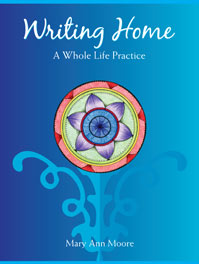 Writing Home: A Whole Life Practice, a seven-week writing pilgrimage on Zoom
Writing Home: A Whole Life Practice, a seven-week writing pilgrimage on Zoom
Thursday, September 15 to Thursday, November 3, 2022
10:30 a.m. to 1 p.m. Pacific time (seven Thursday mornings)
Fee: $350
Embark on a heart-opening and creative journey. Embrace your personal story. Be encouraged and inspired. Envelop yourself with your own wisdom. Live your life from that heart-opening place. Writing Home is a seven-stage writing journey through the chakras during which time I will share readings, poems and printed materials to guide your writing practice. Have a look here for further information: Writing Home: A Whole Life Practice
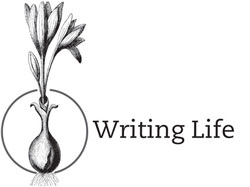 Writing Life women’s writing circle, in person, in Nanaimo
Writing Life women’s writing circle, in person, in Nanaimo
Wednesday, September 14 to Wednesday, October 19 , 2022
10:30 a.m. to 1 p.m. (six Wednesday mornings) +
A Writing Life salon and pot luck lunch on Wednesday, November 2, 2022
Theme: Answering the Call
Fee: $300
In the Writing Life circle, with its guidelines and structure, we create a sense of safety for the memories that may be evoked by a poem, a phrase, a particular topic. Together, we honour the reflections that may be joy-filled or filled with grief as we’ve been called to do. Memories and insights are from a nonlinear realm and the writing and integrating of them can be non-chronological too. The big stories can be told in small, compassionate steps.
No previous writing experience is necessary to join the writing circles. Please contact me to check for availability. Once you have registered, payment is due before the circle begins. The writing circles take place at my home in the Extension/White Rapids area of Nanaimo (except for the Writing Home circles on Zoom). The circle is open . . . .
Have a look here for further information: Writing Life.
by Mary Ann Moore | Jul 31, 2022 | A Poet's Nanaimo
Zoe Dickinson, a poet and bookseller from Victoria, B.C., is the 2022 winner of the Raven Chapbooks Contest with intertidal: poems from the littoral zone. It sounds rather erotic doesn’t it, and definitely literary. (Zoe is also Artistic Director of Planet Earth Poetry in Victoria.)
As Zoe, whose poetry is rooted in the Pacific coastline, explains: “The littoral zone in a coastal ecosystem ranges from the high-tide mark to the subtidal area, and is defined by the presence of sunlight at the sediment level. This zone of alternating intervals of submergence and exposure is home to abundant life due to plentiful oxygen and nutrients.”
Zoe observes the abundant life of intertidal creatures “on the rocky shores of the Juan de Fuca strait where she delights in the “incredible diversity of life [thriving] in every possible nook and cranny. It is this dynamic world-between-the-tides that spawned these poems.”
 Most chapbooks are about twenty pages in length and this one is forty-five beautiful pages. The stunning cover photograph of baby Bull Kelp “growing towards the sun” is by Jackie Hildering, also known as The Marine Detective, an underwater photographer and biology teacher living on northeast Vancouver Island.
Most chapbooks are about twenty pages in length and this one is forty-five beautiful pages. The stunning cover photograph of baby Bull Kelp “growing towards the sun” is by Jackie Hildering, also known as The Marine Detective, an underwater photographer and biology teacher living on northeast Vancouver Island.
Pat Walker designed the book which is a gorgeous tribute to the poems and their subjects. The paper has a smooth finish which makes the book wonderfully tactile. The papers used are described and the main pages are Pacesetter 100# Silk text. (I know at least one person who is interested in paper!)
Illustrations throughout are in black and white as well in colour which add a whole other level of discovery. They’re by Ernst Haeckel (1834 – 1919) who was a German zoologist, naturalist, physician, marine biologist and artist. “He discovered, described, and named thousands of new species, mapping a genealogical tree relating all life forms and connecting many terms in biology.”
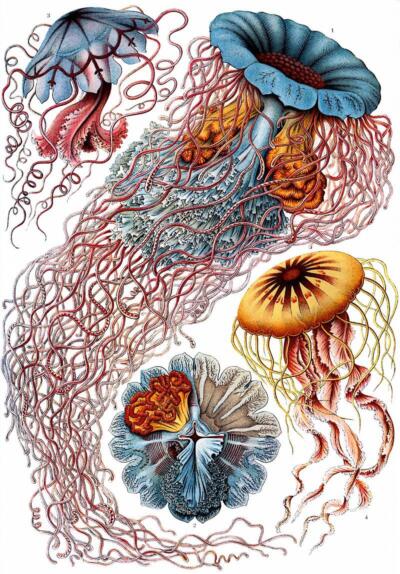 The poems have a beautiful intricacy as well as intimacy in their crafting with a simplicity that is profound in their descriptions of the complex ecology of the Pacific West Coast.
The poems have a beautiful intricacy as well as intimacy in their crafting with a simplicity that is profound in their descriptions of the complex ecology of the Pacific West Coast.
Zoe begins with “I’d like to start by acknowledging” in which she lists a series of acknowledgements of the place “this poem is being written” which is the unceded territories of the Lekwungen speaking peoples. She acknowledges that “my life takes place where someone else’s life should be happening.” She realizes the power of language and of poetry:
. . . if poetry is a way of learning to know the world
then I want my poems
to show this truth
not hide it
and if I’m honest
those are the only two choices.
This is a poet we can trust with her astute observations, knowledge, and a reciprocal relationship with what surrounds her.
The illustration is “Discomedusae” by Ernst Haeckel (1834 – 1919)
The poet mourns the collapse of starfish and receives advice from anemone. And it’s good advice: “share your flesh with someone / who can appreciate it –“
. . .
spit out what does not serve you–
no point in hanging on
to someone else’s shelf.
(“anemone advice”)
In the poem entitled “the meeting,” it’s exciting when the “orcas come” as the speaker thinks “my feet have touched – at low tide— / the place they are swimming . . . “ She acknowledges their connection.
I was fascinated by the name “nudibranch” when Sarah and I moved to Vancouver Island. Zoe has a “nudibranch” poem in which the speaker declares:
well, that’s one way to deal with fear:
instead of getting harder,
cast off the shell
become all soft underbelly
expose every bit of glowing skin
and dare the world to take a bite
what is armour
but participation
with the predator?
The speaker ends with “teach me to be soft / and inexorable.”
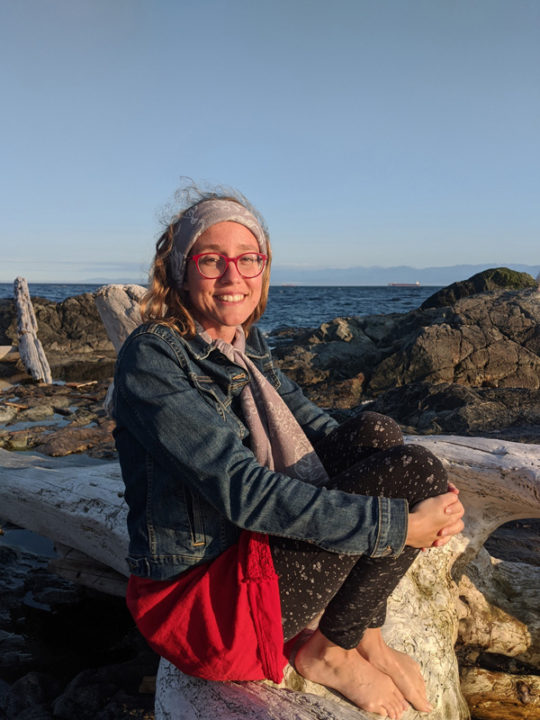 Zoe gives us hope for the human race not only due to her care about and for the shoreline of the Pacific Ocean on Canada’s West Coast. She offers a poem with that title: “hope for the human race” in which the irksome mosquito gets recognized. The narrator lets us know:
Zoe gives us hope for the human race not only due to her care about and for the shoreline of the Pacific Ocean on Canada’s West Coast. She offers a poem with that title: “hope for the human race” in which the irksome mosquito gets recognized. The narrator lets us know:
how the mosquito’s gaze carries messages
between flowers
after dark
how human blood
becomes a link in this ancient chain
and we
accidentally
nourish a constellation of blooms
is proof that even the worst pest
fulfills a purpose in the ecosystem
despite ourselves
Indeed hopeful, wouldn’t you say?
In the poem entitled “bryozoa” which are commonly known as moss animals living in sedentary colonies (thank you Wikipedia) the narrator reflects on her human self:
. . .
some animals discard shells —
bryozoans
discard bodies
keep the shell,
regrow from the outside in
as though
the space we inhabit
holds our true identity
as though all I’d need
to remake myself
is the indentation
my body leaves in the couch;
that crook
in your neck
where my cheek fits perfectly.
Simply exquisite. You’ll want to read the complete poems yourself and celebrate the poetry of Zoe Dickinson and her love of the “incredible diversity of life” on the rocky shores of Juan de Fuca strait.
Raven Chapbooks is an independent press on Salt Spring Island, British Columbia and an imprint of Rainbow Publishers. Diana Hayes is the publisher and she takes great care in creating beautifully designed chapbooks in small editions. That’s part of her mandate as well as “to support poets by providing a launching pad for wider audiences.”
You can order your own copy of intertidal: poems from the littoral zone, here: https://www.ravenchapbooks.ca/

 Her Starfish Soap Company required the making of “thousands of bars of soap to sell to tourists and a growing list of island customers.” She found she could use nettles from “the marshy area at Whalebone Beach” for the tops of homemade pizza as well as for geranium and lavender nettle shampoo bars.
Her Starfish Soap Company required the making of “thousands of bars of soap to sell to tourists and a growing list of island customers.” She found she could use nettles from “the marshy area at Whalebone Beach” for the tops of homemade pizza as well as for geranium and lavender nettle shampoo bars.
 We haven’t learned much since then about rest (Virginia died in 1941) and sometimes it’s illness that has us realize the benefits of rest. And when you take the time to be idle, without being ill, there are indeed many gifts. People often feel guilty when they stop and so push through pain and fatigue as Leonard Woolf did, brushing off his influenza in one day.
We haven’t learned much since then about rest (Virginia died in 1941) and sometimes it’s illness that has us realize the benefits of rest. And when you take the time to be idle, without being ill, there are indeed many gifts. People often feel guilty when they stop and so push through pain and fatigue as Leonard Woolf did, brushing off his influenza in one day. You are worthy of rest.
You are worthy of rest. So along with the respite we need and the rest the work needs, Jane is referring to transitions made in “a gap, a little sabbath.” Poetry has those “hinges” visible on the page in spaces between stanzas, sometimes between words. Jane is referring to the hinges of a life as well and it’s in those still places that we connect to our own story, our own wisdom and insight.
So along with the respite we need and the rest the work needs, Jane is referring to transitions made in “a gap, a little sabbath.” Poetry has those “hinges” visible on the page in spaces between stanzas, sometimes between words. Jane is referring to the hinges of a life as well and it’s in those still places that we connect to our own story, our own wisdom and insight. Betsy Warland’s Bloodroot: Tracing the Untelling of Motherloss (Inanna Publications, 2021) broke new ground when it was first published in 2000 by Second Story Press. There is a lot of white space and as Susan Olding notes in her foreword recalling her first reading of the book in 2008: “The space had presence and weight. The space made room for what cannot be said.”
Betsy Warland’s Bloodroot: Tracing the Untelling of Motherloss (Inanna Publications, 2021) broke new ground when it was first published in 2000 by Second Story Press. There is a lot of white space and as Susan Olding notes in her foreword recalling her first reading of the book in 2008: “The space had presence and weight. The space made room for what cannot be said.” As Hannah McGregor says, Lorde was writing “specifically about self-preservation as a Black lesbian feminist, the refusal to be either forced to live or allowed to die.”
As Hannah McGregor says, Lorde was writing “specifically about self-preservation as a Black lesbian feminist, the refusal to be either forced to live or allowed to die.” Poet and philosopher David Whyte says: in his book Consolations: “We are rested when we let things alone and let ourselves alone, to do what we do best, breathe as the body intended us to breathe, to walk as we were meant to walk, to live with the rhythm of a house and a home, giving and taking through cooking and cleaning. When we give and take in an easy foundational way we are closest to the authentic self, and closest to that self when we are most rested.” (Consolations: The Solace, Nourishment and Underlying Meaning of Everyday Words, Many Rivers Press, 2015).
Poet and philosopher David Whyte says: in his book Consolations: “We are rested when we let things alone and let ourselves alone, to do what we do best, breathe as the body intended us to breathe, to walk as we were meant to walk, to live with the rhythm of a house and a home, giving and taking through cooking and cleaning. When we give and take in an easy foundational way we are closest to the authentic self, and closest to that self when we are most rested.” (Consolations: The Solace, Nourishment and Underlying Meaning of Everyday Words, Many Rivers Press, 2015). The sub-title of the book is “How Journal Writing Can Support a Life of Wellness, Creativity, Meaning and Purpose.” A tall order and I believe the book fulfills its intent. Published by Mango this summer, The Great Book of Journaling features essays by forty of the top journal experts in the world including SARK, Kathleen Adams, Judy Reeves, and Lucia Capacchione.
The sub-title of the book is “How Journal Writing Can Support a Life of Wellness, Creativity, Meaning and Purpose.” A tall order and I believe the book fulfills its intent. Published by Mango this summer, The Great Book of Journaling features essays by forty of the top journal experts in the world including SARK, Kathleen Adams, Judy Reeves, and Lucia Capacchione. An invitation to the Writing Life women’s writing circle
An invitation to the Writing Life women’s writing circle Writing Home: A Whole Life Practice, a seven-week writing pilgrimage on Zoom
Writing Home: A Whole Life Practice, a seven-week writing pilgrimage on Zoom Writing Life women’s writing circle, in person, in Nanaimo
Writing Life women’s writing circle, in person, in Nanaimo Most chapbooks are about twenty pages in length and this one is forty-five beautiful pages. The stunning cover photograph of baby Bull Kelp “growing towards the sun” is by Jackie Hildering, also known as The Marine Detective, an underwater photographer and biology teacher living on northeast Vancouver Island.
Most chapbooks are about twenty pages in length and this one is forty-five beautiful pages. The stunning cover photograph of baby Bull Kelp “growing towards the sun” is by Jackie Hildering, also known as The Marine Detective, an underwater photographer and biology teacher living on northeast Vancouver Island. The poems have a beautiful intricacy as well as intimacy in their crafting with a simplicity that is profound in their descriptions of the complex ecology of the Pacific West Coast.
The poems have a beautiful intricacy as well as intimacy in their crafting with a simplicity that is profound in their descriptions of the complex ecology of the Pacific West Coast. Zoe gives us hope for the human race not only due to her care about and for the shoreline of the Pacific Ocean on Canada’s West Coast. She offers a poem with that title: “hope for the human race” in which the irksome mosquito gets recognized. The narrator lets us know:
Zoe gives us hope for the human race not only due to her care about and for the shoreline of the Pacific Ocean on Canada’s West Coast. She offers a poem with that title: “hope for the human race” in which the irksome mosquito gets recognized. The narrator lets us know: